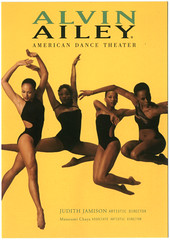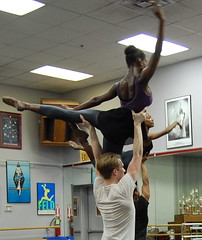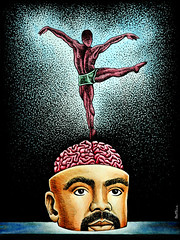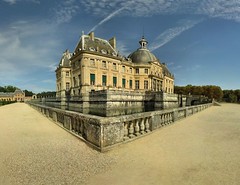Dictators and Monarchs in the Arts / Fine Arts review / Trudeau
Please write the Word of the answer.
1. European city, location of the notably naughty Kit Kat Club. ____
2. Approximate era of the story of Cabaret: a) 1890's b) 1930's c)
1940's d) 1960's.
3. Cabaret takes place in the realm of "big-city poverty, drug and
alcohol escapism, criminals, sleazebags, fighting in the streets,
venereal disease, the prostitution of both sexes" and so on. The
French phrase for this non-bourgeois territory translates literally as
"half the world." It is the __ __.
4. "Bourgeois" refers to the values and social place of the a) upper
working class b) upper middle class c) wealthy class.
5. A cabaret is, more or less, a ____.
6. When a person is declining into a state of degeneracy or into the
state of losing their morals we say they are d___ .
7. In 1930's Germany a party called the Nationalist Socialist German
Worker's Party developed in the region around Munich. It was
popularly known as the __ party.
8. Art approved by the government during the Third Reich:
a) modern, abstract, stimulating b) traditional, realistic,
inspirational c) both the above.
9. Attitude toward art by the Third Reich: a) very important b) to be avoided
c) neutral.
10. The residence of Louis XIV and the preceding French kings in
Paris: the Palais du __.
11. The violent rebellion of the impoverished class in la France, the
French Revolution: a) 1689 b) 1718 c) 1776 d) 1789.
12. Southern European nation from which England, Germany and France
derive much of their influence in cuisine, entertainment, government
and art: __ .
13. Vaux le Vicomte: a splendid example of a 17 thcentury French __ .
14. Noblemen won favor with the king in court life at Versailles by
increasing their skill at __ .
15. As a teen, Louis XIV performed as a gilded Apollo in a famous
opera. He thereby acquired the nickname _ __ __, or,in English, _ _ __
.
16. The Greek words khorea,"to dance" and graphein, "to write," are
synthesized in the modern word __ .
17. The river that connects Paris with the North Sea - and the
Atlantic: a) Seine
b) Rhine c) Danube.
18.France is bordered by Italy, Switzerland, Germany, Luxembourg and a) Belgium
b) Netherlands c) Denmark.
19. Name the ancient Chinese-HIndu symbol for Good fortune that was
used by a short-lived European military regime in the late 20th
century: the __ .
20.The German word for Germany: __land.
21. This dancer was born in rural Texas and schooled in Los Angeles.
His creativity, however, flowered in NYC. He was __ __ .
Congrats to Lev Hudson, top scorer on this quiz.









